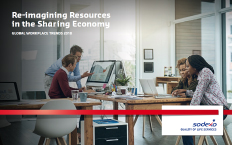Re-imagining Resources in the Sharing Economy
Faced with an often difficult “new normal” in the post-2008 economic sphere, both individuals and corporations are re-examining how their resources are used. Out of this has grown a “sharing” or “gig” economy; one that eschews traditional ownership to promote maximum efficiency of labor and materials.
In practice, the sharing economy has meant a rise in freelance working as well as frequent and temporary sharing of material resources like office space and equipment. This represents an unprecedented opportunity for organizations and individuals alike, from greater agility for companies to better work–life balance and fulfillment for employees.
However, workers and companies participating in the sharing economy face a number of challenges. Employees are open to exploitation, while organizations are vulnerable to the risks associated with sharing resources.
Despite these issues, the sharing economy is clearly here to stay—and forward-thinking organizations are redefining their business models to leverage its many benefits. With insights from sharing economy expert Professor Arun Sundararajan and startup guru Sissel Hansen, this article explores what the sharing economy means for the world of work in 2018 and beyond.
If you would like to receive the individual Global Workplace Trends 2018 as they are released, please follow this link:
To go further
About the 2018 Global Workplace Trends
Every year, Sodexo looks at the main factors affecting the world’s workers and employers now — and in the future. These trends resonate across the spectrum of employee experience and can serve as a useful tool for employers navigating a landscape that is ever evolving.










